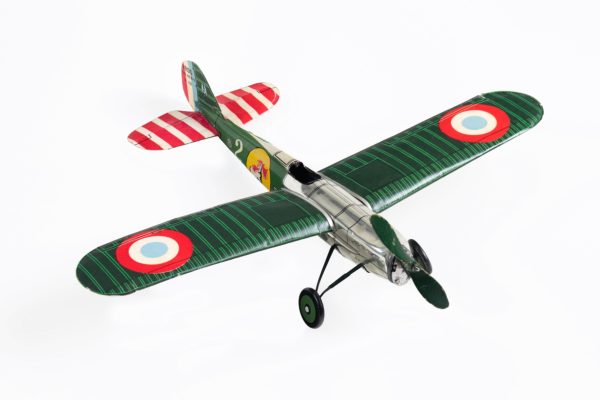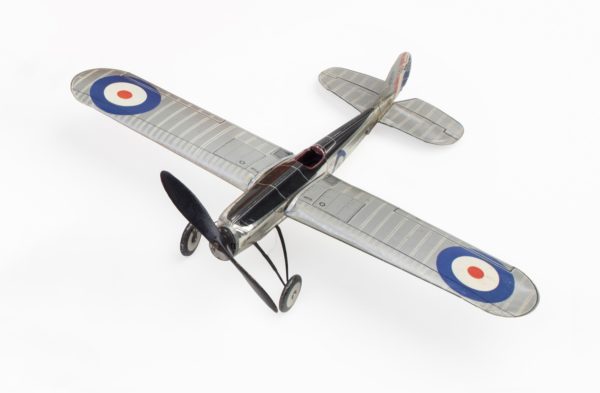For more than a decade, from the beginning of the 1930s to the end of the Second World War, for a variety of reasons – such as the production of flying toys, the shortage of cheap metal and the restrictions imposed by the total war – manufacturers in different countries produced cardboard aircraft with as little metal as possible.
In Spain, even before the Civil War
R.S La Isla
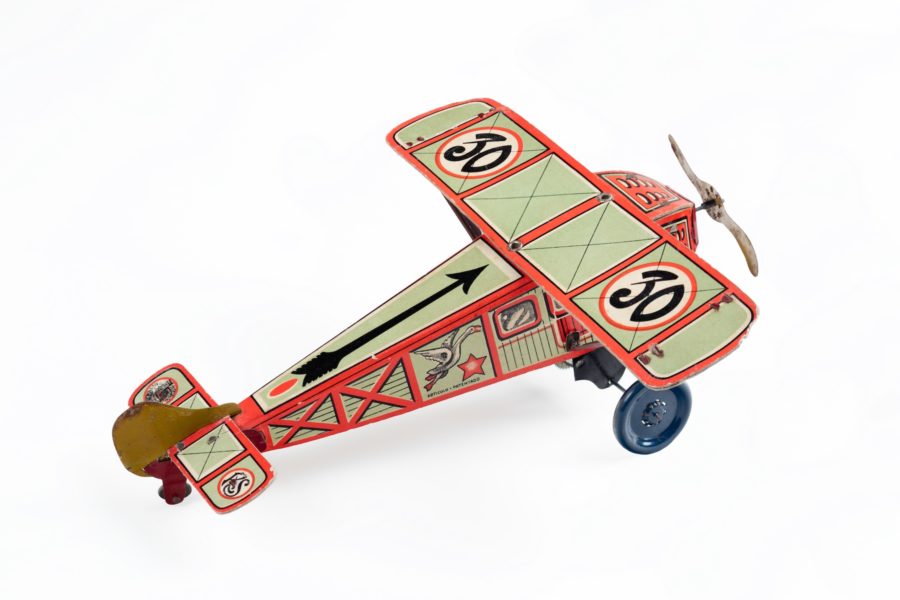
Joaquin Domenech Rico
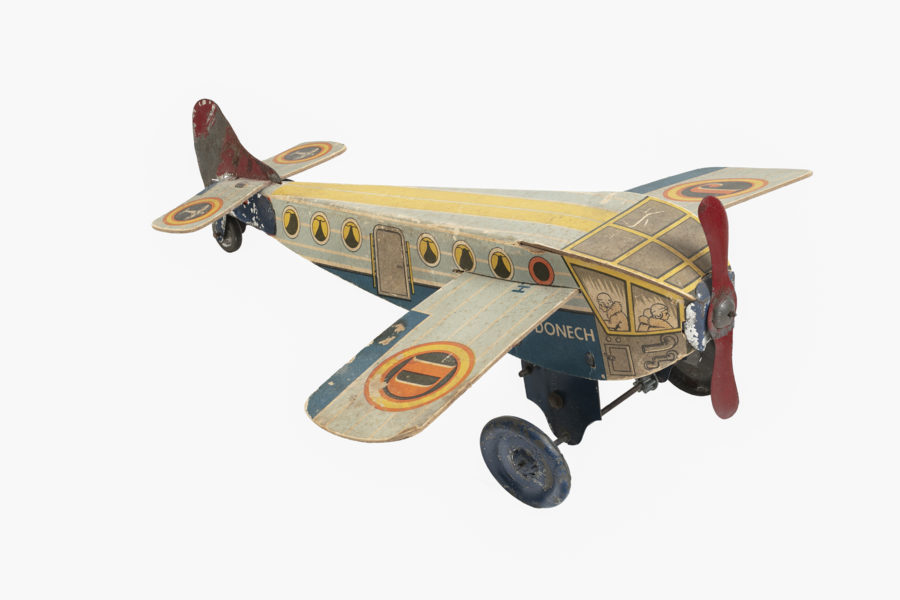
1943, spring-loaded, rolls on the floor, 26 x 30 cm
In Japan
Asano
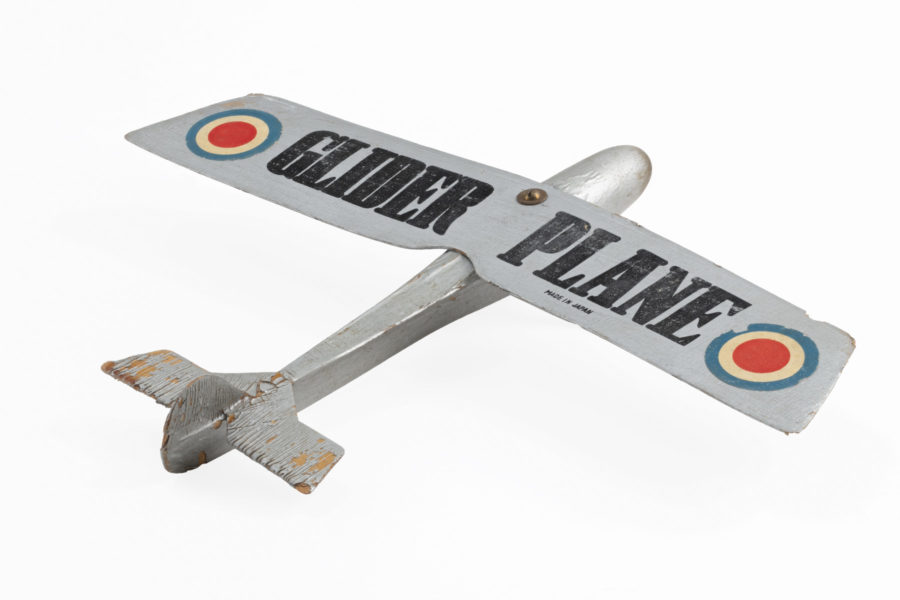
1933, flying, propelled by a rubber-band launcher,
In Great Britain
Frog de Tri-ang Toys
1933, rubber band drive, flies, 30 x 24 cm
Rigby
Wallis Rigby, who designed the Frogs for Tri-ang Toys, also produced his own models, including this one for the Dayly Mail in 1935.
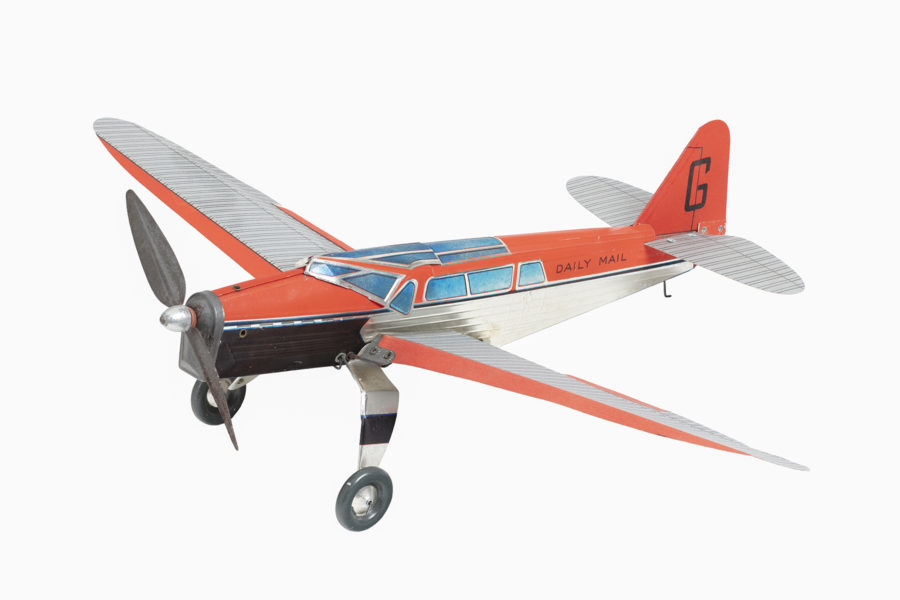
Rubber band movement, the plane flies, 42 x 29.5 cm
And this one in 1938
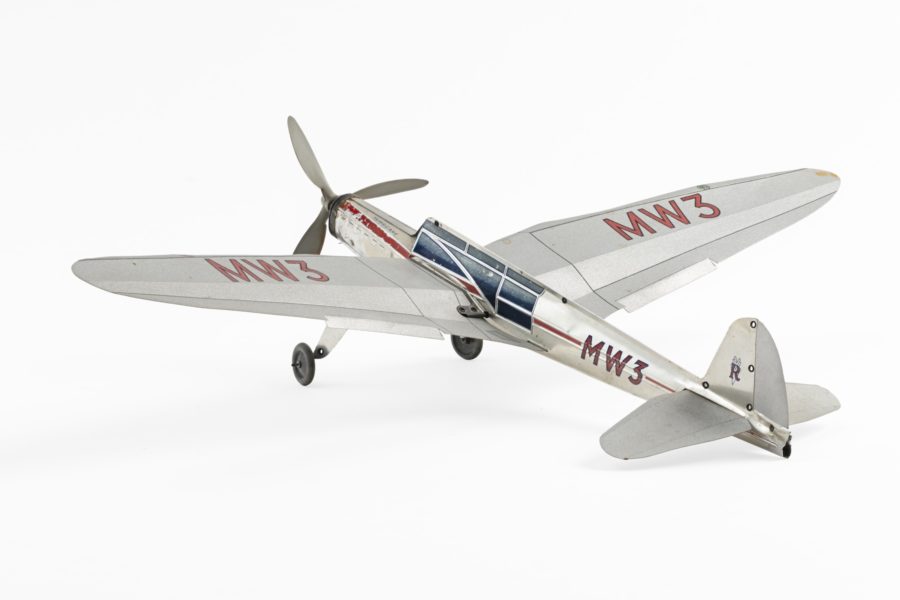
In the United States
Fanny Farmer
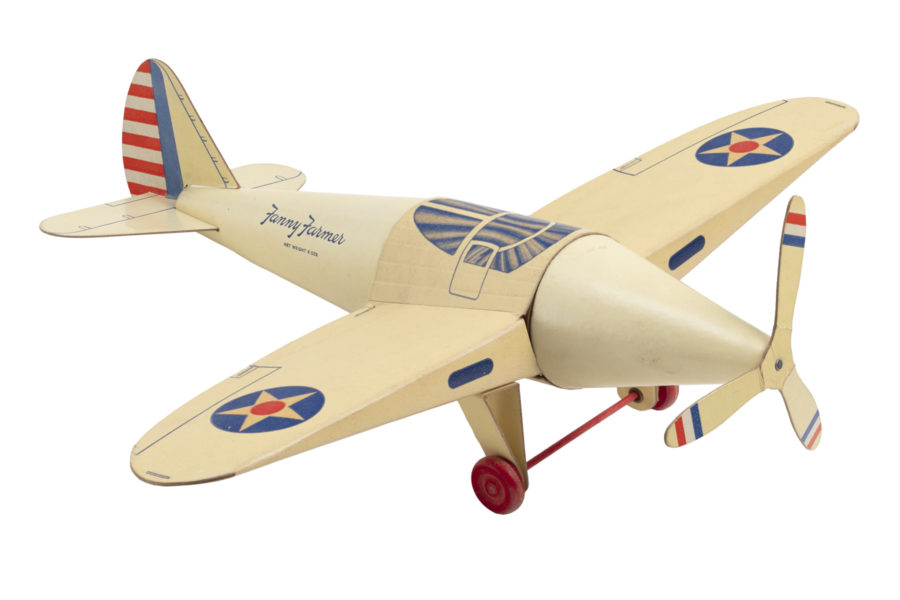
Early 1940s, candy box, toy, 42 x 29 cm
Between 1940 and 1944, in Germany, Tipp & Co modified a 1936 tin toy by replacing as much of the lithographed tin as possible with cardboard. The country entered the total war relatively late.
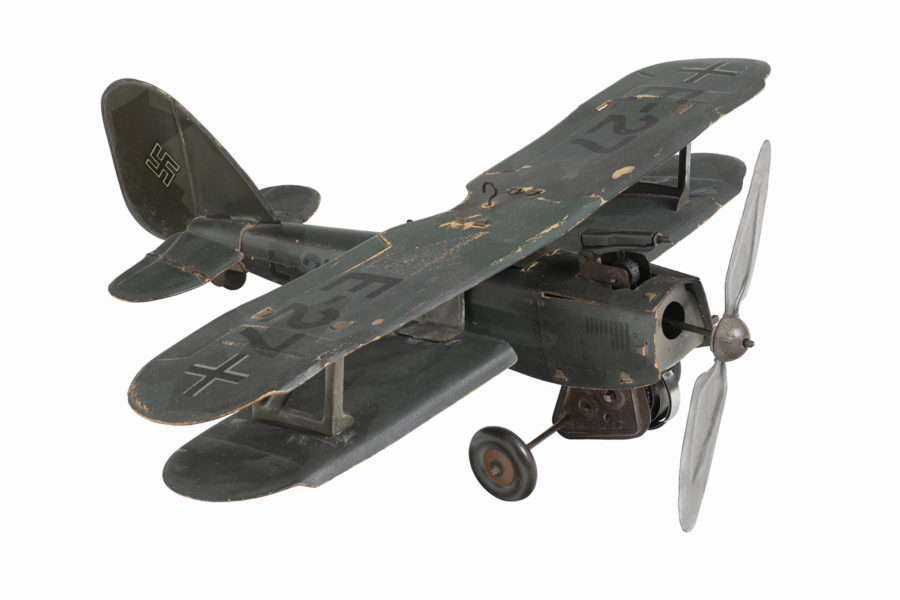
Clockwork, rolls on the ground, propeller turns, machine gun, flintlock system, 30 x 28 cm

